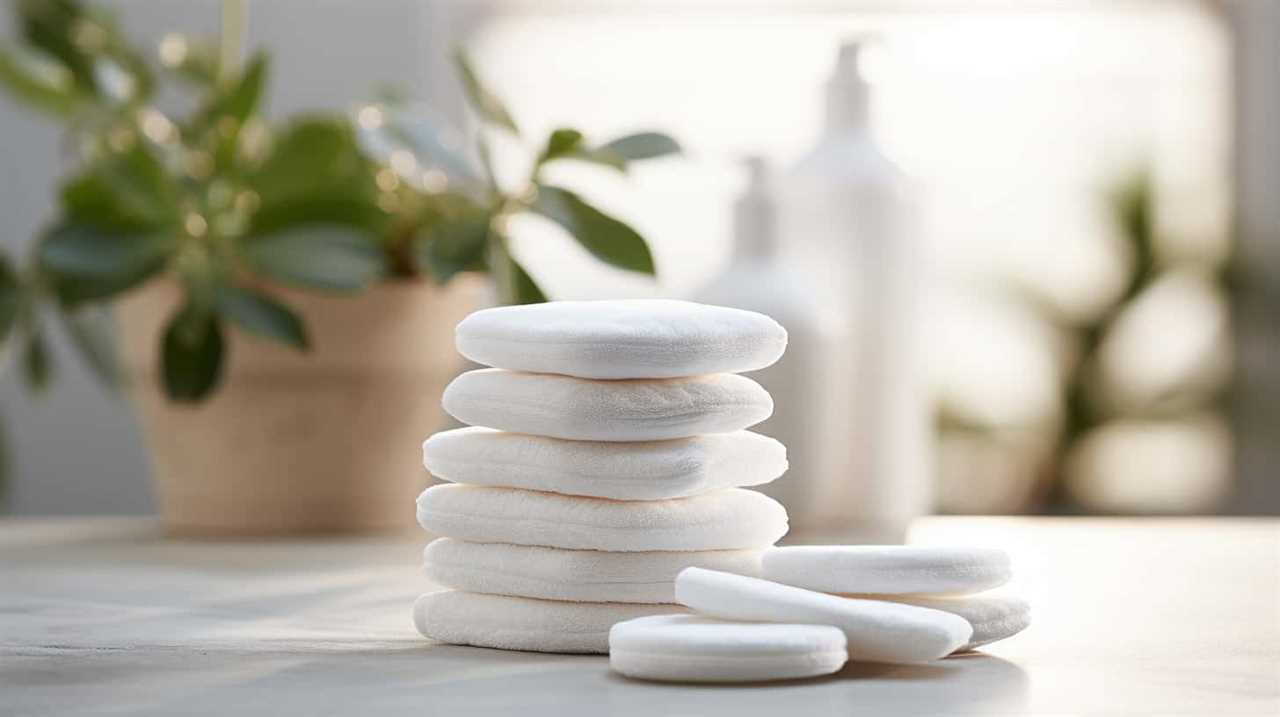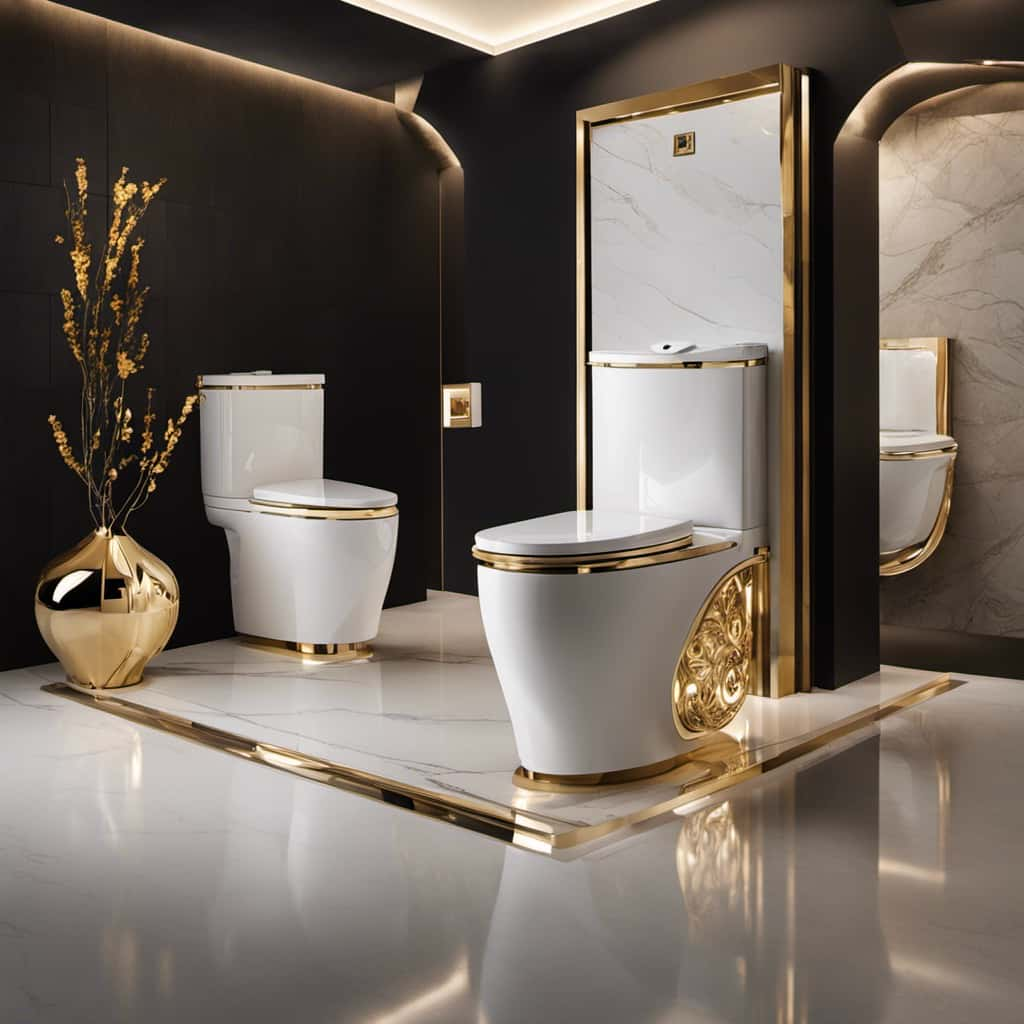Similar to contemporary people, the ancient Greeks also valued cleanliness and personal hygiene.
In our quest to understand their daily practices, we must ask the question: did the Greeks have toilet paper?
This article delves into the fascinating world of ancient Greek toileting habits, examining the materials they used, the facilities they had, and the alternative methods for cleanliness.
By comparing their practices with those of other ancient civilizations, we aim to uncover the truth about whether or not the Greeks used toilet paper.

Key Takeaways
- Bathing played a significant role in personal cleanliness in ancient Greece.
- Sponges were commonly used for scrubbing and exfoliating the skin.
- Water, sponges, and olive oil were used for cleaning after using the toilet.
- There is no historical evidence of toilet paper use in ancient Greece.
Ancient Greek Hygiene Practices
How did the ancient Greeks maintain their hygiene practices?
Ancient Greek bathing customs played a significant role in their personal cleanliness. Bathing wasn’t just a means of physical purification but also a social and cultural activity. Greeks believed that bathing promoted good health and cleanliness. They’d visit public bathhouses called ‘thermae’ or ‘balaneia’ to cleanse their bodies. These bathhouses had separate areas for men and women and included various rooms with different temperatures for different purposes, such as hot and cold baths, steam rooms, and exercise areas.
Additionally, the ancient Greeks had a rich understanding of medical knowledge, which influenced their hygiene practices. They believed that maintaining a clean body contributed to overall well-being. This emphasis on hygiene and health demonstrates the Greeks’ commitment to personal cleanliness.
Now, let’s explore the materials they used for personal cleansing.

Materials Used for Personal Cleansing
The ancient Greeks used a variety of materials for personal cleansing, including sponges, water, and olive oil. These materials were an integral part of their bathing rituals and hygiene practices.
Here are three ancient Greek cleaning tools commonly used for personal cleansing:
- Sponges: Natural sea sponges were widely used by the ancient Greeks for cleaning their bodies. These soft and absorbent sponges were perfect for scrubbing and exfoliating the skin.
- Water: Water played a crucial role in ancient Greek bathing rituals. They’d often use water from natural springs or rivers to cleanse themselves, believing in its purifying properties.
- Olive oil: The Greeks used olive oil as a cleansing agent and moisturizer. They’d apply it to their bodies before bathing to remove dirt and nourish their skin.
These ancient Greek cleaning tools reflect their commitment to personal hygiene and the importance they placed on cleanliness.
Ancient Greek Toileting Facilities
Let’s now turn our attention to the ancient Greek toileting facilities and explore the various designs and sanitation practices that were prevalent during that time.

By examining the historical evidence, we can gain insight into the methods used for personal hygiene and waste disposal in ancient Greece.
Additionally, we’ll also explore the alternatives to toilet paper that were likely utilized by the Greeks for cleansing purposes.
Greek Toilet Designs
We discovered fascinating Greek toilet designs while researching whether the Greeks had toilet paper. Through archaeological evidence, we gained insights into the innovative ways that ancient Greeks approached their toileting facilities. Here are three remarkable Greek toilet designs:
- Deep Shaft Toilets: These were deep pits dug into the ground, with a stone or wooden seat placed on top. Waste would fall into the pit, which was then covered with soil or lime to prevent odors.
- Chamber Pots: These portable vessels were used for indoor toileting. They were made of clay or metal and could be easily emptied and cleaned.
- Public Latrines: Found in public spaces, these toilets were often situated in rows with multiple seats. They were made of stone or marble, and waste would flow into a sewage system or a river.
Transitioning into the subsequent section about sanitation practices in Greece, these innovative toilet designs played a significant role in maintaining cleanliness and hygiene in ancient Greek society.

Sanitation Practices in Greece
As we delve into the topic of sanitation practices in Greece, it’s essential to explore the fascinating world of ancient Greek toileting facilities. Ancient Greek bathroom habits provide insights into their sanitation practices.
In ancient Greece, toilets were typically located in a separate room called the ‘latrine’. These latrines were often communal, with multiple seats placed in a row. The seats were usually made of stone or wood and had holes for waste disposal. However, unlike modern toilets, there was no running water or flushing mechanism.
Instead, ancient Greeks used a bucket of water or a sponge attached to a stick for cleaning themselves after using the toilet. This highlights the resourcefulness and ingenuity of Greek sanitation practices.
Transitioning into the subsequent section about ‘toilet paper alternatives’, let’s now explore how the Greeks managed without toilet paper.

Toilet Paper Alternatives?
Did the Greeks use toilet paper or did they have alternative methods for cleaning themselves? It’s fascinating to explore the ancient Greek toileting facilities and their sustainable alternatives to toilet paper. Here are three alternatives that the Greeks used:
- Water: The Greeks commonly used water for cleaning themselves after using the toilet. They’d have a jug or pitcher of water nearby to cleanse themselves.
- Sponges: Another method employed by the Greeks was the use of sponges attached to sticks. These sponges would be soaked in water and used for cleaning.
- Olive oil: In some cases, olive oil was used as a lubricant and cleanser. It provided a smooth and moisturizing effect, leaving the skin feeling clean and refreshed.
These sustainable alternatives show the resourcefulness of the Greeks in maintaining cleanliness without relying on toilet paper. Now, let’s delve into the written records on Greek bathroom habits to gain further insights into their sanitation practices.
Written Records on Greek Bathroom Habits
When examining the topic of Greek bathroom habits, it’s important to consider the written records that provide insights into their hygiene practices.
These records offer a valuable glimpse into the daily lives of the ancient Greeks and shed light on their use of alternative materials in the absence of toilet paper.

Ancient Hygiene Practices
We have limited written records on ancient Greek bathroom habits, but they do provide some insight into their hygiene practices. The Greeks had various ancient cleansing rituals that they followed for personal cleanliness. Here are three interesting practices that have been recorded:
- Water and Sponge: The Greeks typically used water and a sponge for cleaning themselves after using the toilet. This method is similar to modern bidets, which also use water for cleansing.
- Olive Oil and Strigil: Olive oil was often used by the Greeks to clean their bodies. They’d rub the oil on their skin and then scrape it off using a tool called a strigil. This practice helped remove dirt and sweat.
- Public Bathhouses: The Greeks had public bathhouses where people could go to bathe and clean themselves. These bathhouses were a central part of their hygiene routine and were also used for socializing.
These ancient cleansing rituals provide a fascinating glimpse into the hygiene practices of the ancient Greeks. However, the question still remains: Did they use alternative materials for toilet paper?
Use of Alternative Materials?
As we delve further into the topic of ancient Greek hygiene practices, it’s interesting to explore whether they relied on alternative materials for personal cleanliness, specifically in the context of their bathroom habits. While there’s no direct historical evidence of toilet paper usage in ancient Greece, we can examine cultural perspectives on personal hygiene to gain insights.
Ancient Greeks highly valued cleanliness and practiced bathing regularly. They used water, soap, and oils for cleaning their bodies. In terms of bathroom habits, they likely used materials such as sponges or stones, which were common in many ancient civilizations. These materials would have been used to clean themselves after using the toilet.

Although toilet paper as we know it today may not have existed, the Greeks found alternative means to maintain personal cleanliness.
Artistic Depictions of Greek Toileting
Numerous ancient Greek artworks depict the use of toilets and the act of toileting. These artistic interpretations provide valuable historical evidence regarding the practices and attitudes towards hygiene in ancient Greece. Here are three key insights gleaned from these depictions:
- Public toilets: Greek artwork often features scenes of individuals using public toilets, suggesting that communal facilities were common in ancient Greece. These toilets were typically simple stone benches with holes, allowing users to sit and relieve themselves.
- Hygiene rituals: Some artworks show individuals engaging in post-toilet hygiene rituals, such as washing with water or using sponges on sticks. This indicates that cleanliness was a priority for the ancient Greeks, even in their toileting practices.
- Social dynamics: Artistic depictions also reveal the social aspects of toileting, with scenes showing individuals conversing or engaging in activities while using the toilet. This highlights the communal nature of ancient Greek toilets and the importance of social interaction even in private moments.
Transitioning into the subsequent section about alternative methods for cleanliness, it’s clear that Greek artistic depictions provide valuable insights into the historical practices of toileting.
Alternative Methods for Cleanliness
Continuing from the previous subtopic, it’s evident that Greek artistic depictions shed light on alternative methods for cleanliness in ancient Greece. Historical evidence of alternative cleaning methods reveals cultural differences in personal hygiene practices.

The Greeks, lacking toilet paper as we know it today, had several other methods to maintain cleanliness. One common practice was the use of a sponge attached to a stick, known as a ‘xylospongium,’ which was dipped in water and used for cleansing after using the toilet. Additionally, the Greeks used water and their hands to wash themselves.
These methods highlight the resourcefulness and practicality of the ancient Greeks when it came to personal hygiene. These alternative methods for cleanliness in ancient Greece provide a fascinating insight into the cultural practices of the time.
Transitioning into the subsequent section about ‘comparisons with other ancient civilizations,’ it’s important to consider how these methods differ from those of other ancient societies.
Comparisons With Other Ancient Civilizations
Throughout history, civilizations across the globe have adopted various methods for personal hygiene, including the Greeks. When comparing the ancient Greek toileting customs with those of other ancient civilizations, it becomes clear that each society had unique practices for maintaining cleanliness.

Here are three key comparisons:
- Ancient Egypt: Egyptians used a combination of water, sand, and stones as a form of cleansing after using the toilet. They believed in the importance of cleanliness for both physical and spiritual well-being.
- Ancient Rome: Romans were known for their advanced sanitation systems, which included public toilets and a sophisticated sewer system. They used a sponge attached to a stick, known as a ‘tersorium,’ to clean themselves after using the toilet.
- Ancient China: The Chinese developed the first known form of toilet paper made from materials such as rice straw and hemp. They recognized the importance of hygiene and cleanliness in their daily lives.
Conclusion: Did the Greeks Use Toilet Paper?
In our research, we’ve found evidence to suggest that the ancient Greeks didn’t use toilet paper. While it’s difficult to ascertain the exact bathroom habits of the Greeks, there’s no historical evidence of toilet paper use in ancient Greece.
Greek toilets, known as ‘latrines’, were communal spaces with little privacy. They were typically located outside the house and consisted of a row of stone seats with holes. To clean themselves, the Greeks likely used a variety of methods, such as water, sponges, or even their hands.
It’s important to note that the absence of toilet paper doesn’t imply a lack of hygiene, as different cultures have employed various methods throughout history to maintain cleanliness.

Frequently Asked Questions
How Did Ancient Greeks Clean Themselves After Using the Toilet?
After using the toilet, ancient Greeks likely cleaned themselves using water for cleansing, as was common in many ancient civilizations. They may have also used natural materials such as sponges or leaves.
Were There Any Written Records of Ancient Greek Bathroom Habits?
When examining ancient Greek plumbing and hygiene practices, it is fascinating to explore any existing written records. By delving into these sources, we can gain a comprehensive understanding of the ancient Greeks’ bathroom habits.
What Materials Did Ancient Greeks Use for Personal Cleansing?
When examining Ancient Greek hygiene practices, it is important to consider the alternative materials they used for personal cleansing. These materials varied from natural sponges, water, and even pieces of pottery.
Did Ancient Greeks Have Specific Facilities for Toileting?
Did ancient Greeks have specific facilities for toileting? We analyze ancient Greek sanitation methods and archaeological evidence of ancient Greek toilets to provide a thorough and unbiased assessment of their toilet facilities.

Are There Any Artistic Depictions of Ancient Greek Toileting Practices?
In examining Ancient Greek artwork, we can gain insight into their hygiene practices. While there are a variety of scenes depicted, the topic of toileting is not frequently portrayed in a detailed manner.
Conclusion
In conclusion, after examining various sources and evidence, it’s unlikely that the ancient Greeks used toilet paper. Their hygiene practices and toileting facilities suggest the use of alternative methods for cleanliness, such as water and various materials.
While we can’t be certain, the lack of written records or artistic depictions of toilet paper usage in ancient Greece further supports this conclusion. As the saying goes, ‘Necessity is the mother of invention,’ and the Greeks found innovative ways to maintain personal hygiene without the use of toilet paper.










